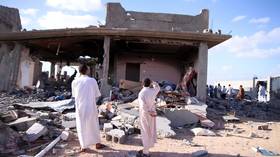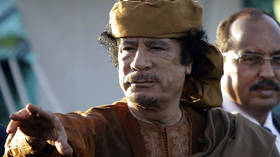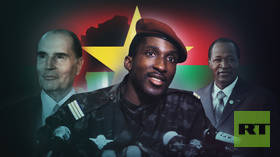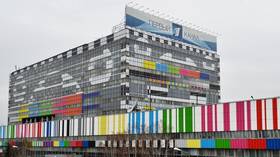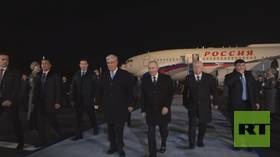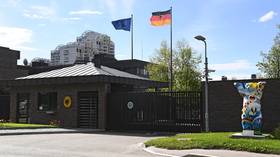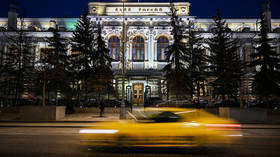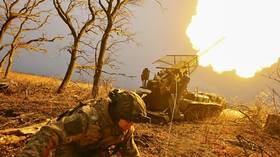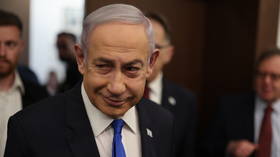Brutally murdered 13 years ago, this leader is only growing more beloved
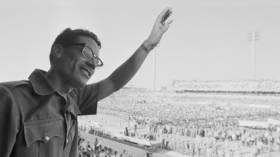
October marked 13 years since Colonel Muammar Gaddafi was brutally murdered by a NATO-supported mob of rebels in circumstances still buried under a barrage of deliberate disinformation. Yet 13 years on, Gaddafi is probably the most popular figure in the North African country.
Is it just nostalgia that makes the general public yearn for a man who has long been dead, or is there something else that goes beyond mere nostalgia as a human emotion?
What happened?
On September 23, 2009, in his first and only speech before the United Nations General Assembly, Muammar Gaddafi described the UN Security Council as council of “horror.” He explained that the council, by the UN charter, is responsible for peace in the world but has only brought “more wars and sanctions.” What he did not know at the time was that the same UN organ would, less than two years later, authorize his removal and ultimately his murder by adopting resolution 1973, which gave the green light to all UN member states to interfere in Libya as long they notified the UN Secretary General of their intention to do so.
Resolution 1973
Resolution 1973, adopted on March 17, 2011, was the UNSC response to public demonstrations that engulfed parts of Libya in the previous month, in which people demanded better living conditions, housing, and jobs. By the time the issue was deliberated at the UN, what had been peaceful and legitimate public demonstrations had turned into an armed revolt led by various stakeholders, including Islamists and former terrorists, against the legitimate government.
The wave of public discontent in Libya was part of wider public awakenings that began in neighboring Tunisia before moving to Egypt. In both countries, the West attempted to save President Ben Ali in Tunisia and later his Egyptian counterpart, Hosni Mubarak, but failed. There were no calls for military intervention to “protect” civilians in either country. With Libya, it was a completely different matter.
Faced with armed groups seeking to destabilize the country, the Gaddafi government responded, just like any other respected government would do, by using force against the armed rebellion. Under Gaddafi, Libya had seen similar events in the previous four decades, where Western-supported attempts were made not only to kill Gaddafi but also to bring about regime change by force. The government used force to contain the demonstration, but specifically targeting the armed groups that had sprung up among the peaceful demonstrators.
In this chaos, many innocent people were killed and wounded, but nowhere near the inflated figures reported in Western media and publically talked about by Western politicians in their quest to widen the rift between the Libyan authorities and its citizens and to sow discord among the Libyans who were divided between supporters of Gaddafi and supporters of what became known as the February 17 Revolution. William Hague, the UK’s foreign minister at the time, for example, told the world’s media that Gaddafi had already fled the country and was on his way to Venezuela, when in fact Gaddafi never left Tripoli – so Hague misled public opinion, which further inflamed the situation.
Rush to action without facts
Under pressure from veto-wielding permanent superpower members, the UNSC passed resolution 1973 under the pretext of the ‘Right to Protect’ (R2P) doctrine that, controversially, allows the UN to use military force to protect civilians when their government fails to do so. Paragraph 4 of the resolution called on all world countries to “take all necessary measures” to protect civilians in Libya, impose a no fly zone, and urged all UN member states to tighten the embargo already imposed on the country by UNSC resolution 1970, passed on February 26, 2011, referring the situation in Libya to the International Criminal Court (ICC), to investigate the alleged war crimes and crimes against humanity allegedly being committed on a large scale in Libya on the orders of Gaddafi himself, who was one of three officials indicated by the court.
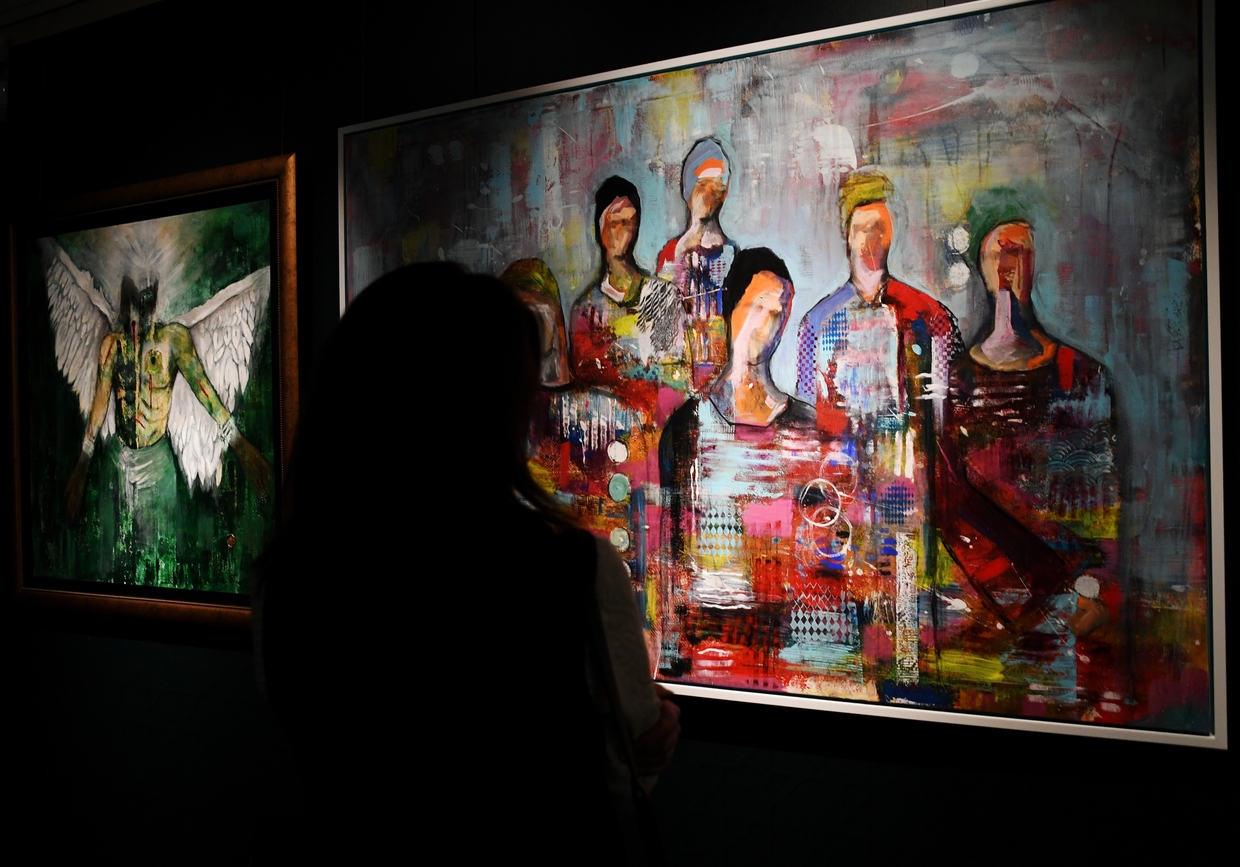
Resolution 1970 was not passed based on concrete independent investigative reports of facts but, mainly, based on biased media reports. Neither the UN nor any of its relevant institutions investigated events on the ground to be able to lay blame, and the first official UN mission arrived in Libya in March and reported to the UNSC in April 2011. This means the UNSC adopted its two resolutions, 1970 and 1973, based on unverified media reports, unreliable witness statements and biased civil organizations accounts.
By the time the UNSC adopted resolution 1973, Libya was already in a full-swing civil war between the armed rebels and government forces that, in being dehumanized by biased Western media, were called “Gaddafi brigades.”
The rebels were actually a mix of terror organizations and locals who chose to fight the government. They included groups such as Al-Qaeda, Ansar Al-Sharia, Al-Qa’ida in the Lands of the Islamic Maghreb, Libyan Islamic Fighting Group, and remnants of other groups and Afghan war veterans who infiltrated the country.
By mid-March 2011, Libya was consumed by internal violent strife, its government boycotted by most countries, its voice drowned under the barrage of media lies and fake news, its officials banned from travel, and its leader being hunted day and night. The rebels fighting the government were being supplied, financed, armed, trained, and directed by the West and several Arab countries such as Qatar, Jordan, and United Arab Emirates.
The stage was set for NATO to take over the military intervention. In fact, France, the US, and UK had already started bombing Libya by launching the first wave of missile strikes on Libyan air defense sites and radars in order to prepare the ground for imposing a no-fly zone. Even civil security forces, manning checkpoints around Tripoli, were bombed. By the end of March 2011, Libya has become a “theatre of operations” and NATO launched “Operation Unified Protector” with an around-the-clock bombardment.
That meant that the strongest military alliance in human history had just launched its first war in North Africa since France was defeated in Algeria in 1962. By the end of its operation, NATO had killed hundreds of Libyan women and children, destroyed private properties and infrastructure, all in the name of reinforcing international law and protecting civilian while the real agenda was far more sinister. The scenes of chaos, destruction, displacements, and killings continued from March to October, in which the Libyan army managed to hold back the rebels on the ground while facing NATO air bombardments. On October 20, 2011, Gaddafi was murdered in gruesome scenes and his body, alongside the bodies of his son and his defense minister, displayed for the horrified public to see.
The real goals of the NATO operationin Libya
Murdering Gaddafi turned out to be the ultimate real goal of NATO’s campaign in Libya. The decision was made that he must be liquidated as a person and everything he represented as leader must be erased from the memory of his people and millions more across Africa to whom he was a source of inspiration as an honest African leader.
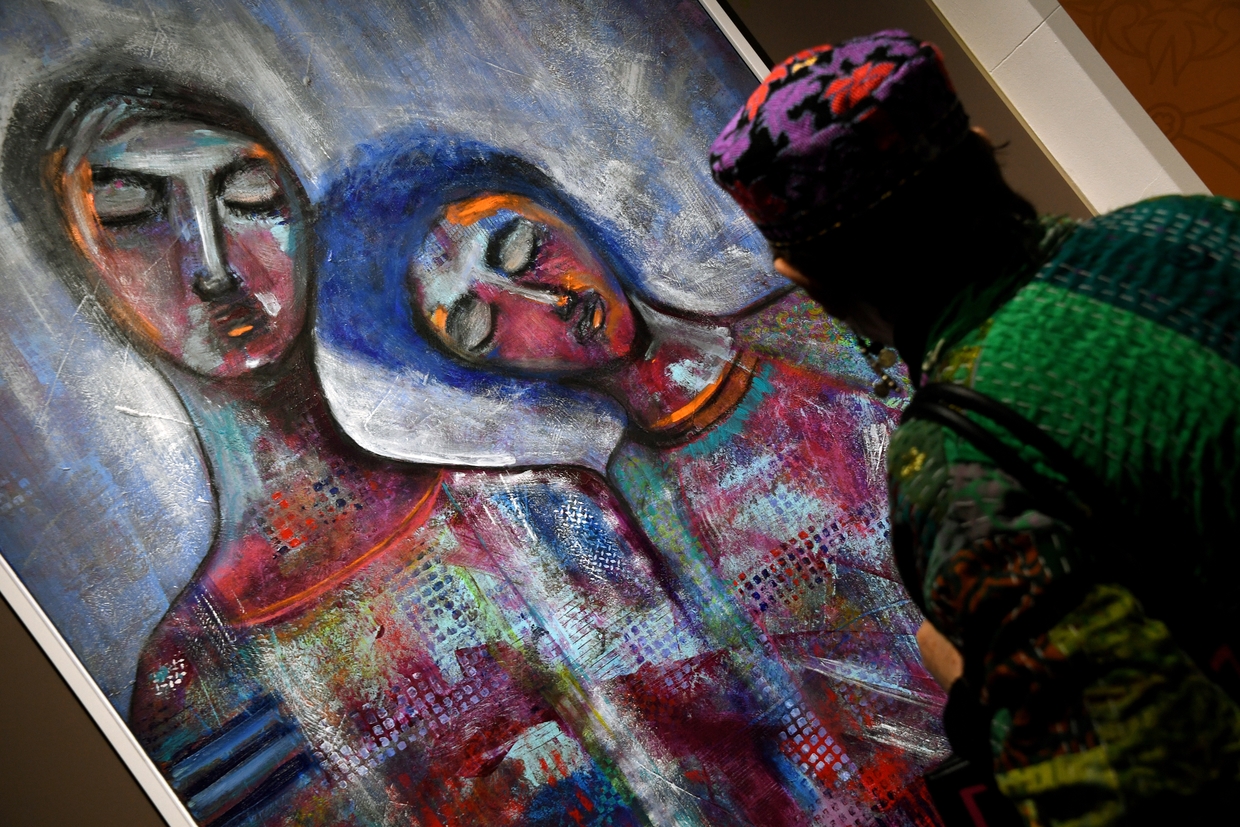
The bigger immediate objective was to transform Libya from an independent state with sovereign decision-making into a Western subordinate, chaotically run and unable to decide for itself on any major national issue including elections, economic policies, and management of its national wealth, including billions still frozen around the world.
To achieve that, the climate and environment of social solidarity which took Gaddafi decades to secure and strengthen was dismantled and killed as an idea, allowing the entire Libyan social fabric to be dismantled, ushering in an era of chaos and dependence on foreign powers.
Today, the West continues to make every effort to prevent the country from being reclaimed by its own people, even if that happens through ballot boxes brought by Western planes under the pretext of transforming Libya into a democratic paradise on the southern shore of the Mediterranean.
“Gaddafi did not die”
Yet after all these years, the man the West portrayed as evil and whom they destroyed Libya to remove, is still remembered and cherished by most Libyan as if he had not died at all.
In September, thousands of ordinary people took to the streets in dozens of cities, towns, and villages across the country to celebrate 55 years since Gaddafi came to power on September 1, 1969, in what became known as Al-Fatih Revolution. While commemorations have happened almost every year since 2011, this year’s festivities were notable for the large number of young people taking part. In Bani Walid, for example, the celebrations featured a parade led by a Gaddafi lookalike complete with body guards.
Ali Al-Kilani, a renowned poet and former Gaddafi aide, claims “Gaddafi did not die” because he made Libyans believe in themselves and “be proud of their independence and sovereignty.” Looking at the number of people who celebrated this year is proof that “he is still popular despite what has been done to erase him from people’s minds,” said Al-Kilani from his self-imposed exile in Cairo, Egypt.
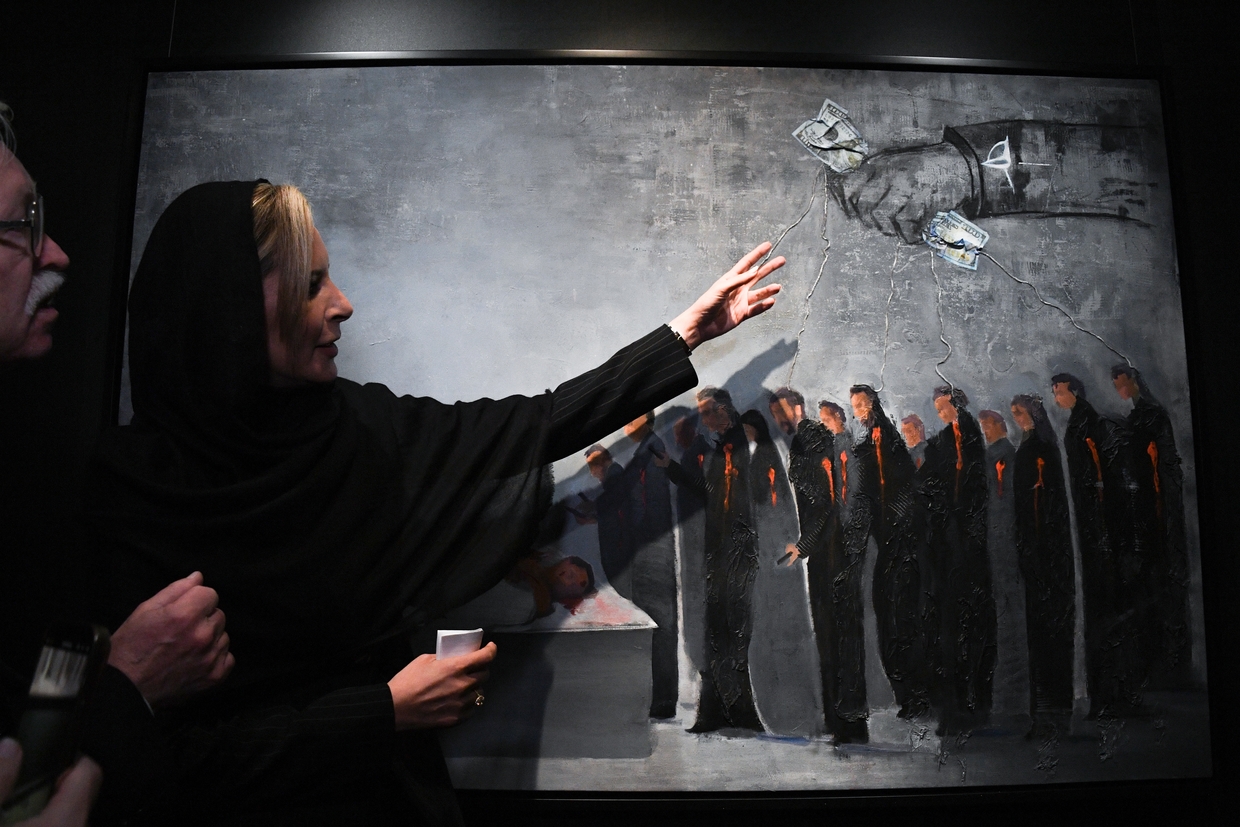
To honour her father’s memory this year, Aisha Gaddafi, one of two daughters of the late leader, chose to exhibit her art work commemorating him in the State Museum of Oriental Art in Moscow. Invited by Igor Spivak, the chairman of the Russian Mideast Society, Aisha accepted the invitation after meeting Spivak in Oman, where she lives in exile. Inaugurating the show, she said, “I show these works for the first time to honour my father and my brother on the anniversary of their deaths.” Aisha, who lost her husband and two children in a NATO airstrike, added, “I can tell you that these pictures are painted not with my hand, but with my heart.”
Spivak said he wanted Aisha to exhibit in Moscow because people in Russia “love her, love her father, and want to see her art in Russia.”
Could popularity become votes?
The very fact that many Libyans still honour Gaddafi and remember him means that the top NATO goal of erasing his memory has failed. His popularity today could also play a decisive role in elections whenever they take place. His son Saif Al-Islam, who registered to contest presidential elections in December 2021, was tipped to win, but the vote was indefinitely postponed thanks to US and UK rejection of him being on the ballots.
The ambassadors of the UK and US to Libya intervened just before election day, on December 24, 2021, to voice their rejection of his nomination. They claimed that Saif Al-Islam is not a good choice for Libya as he is wanted by the ICC. Indeed, Saif Al-Islam has been indicted by the ICC, but Libyan courts have already exonerated him though a general amnesty law passed by the parliament in 2015. The young Gaddafi today is much more popular than any other potential nominee, and much of his popularity stems from his family name and the fact that he stood by his father during the war.
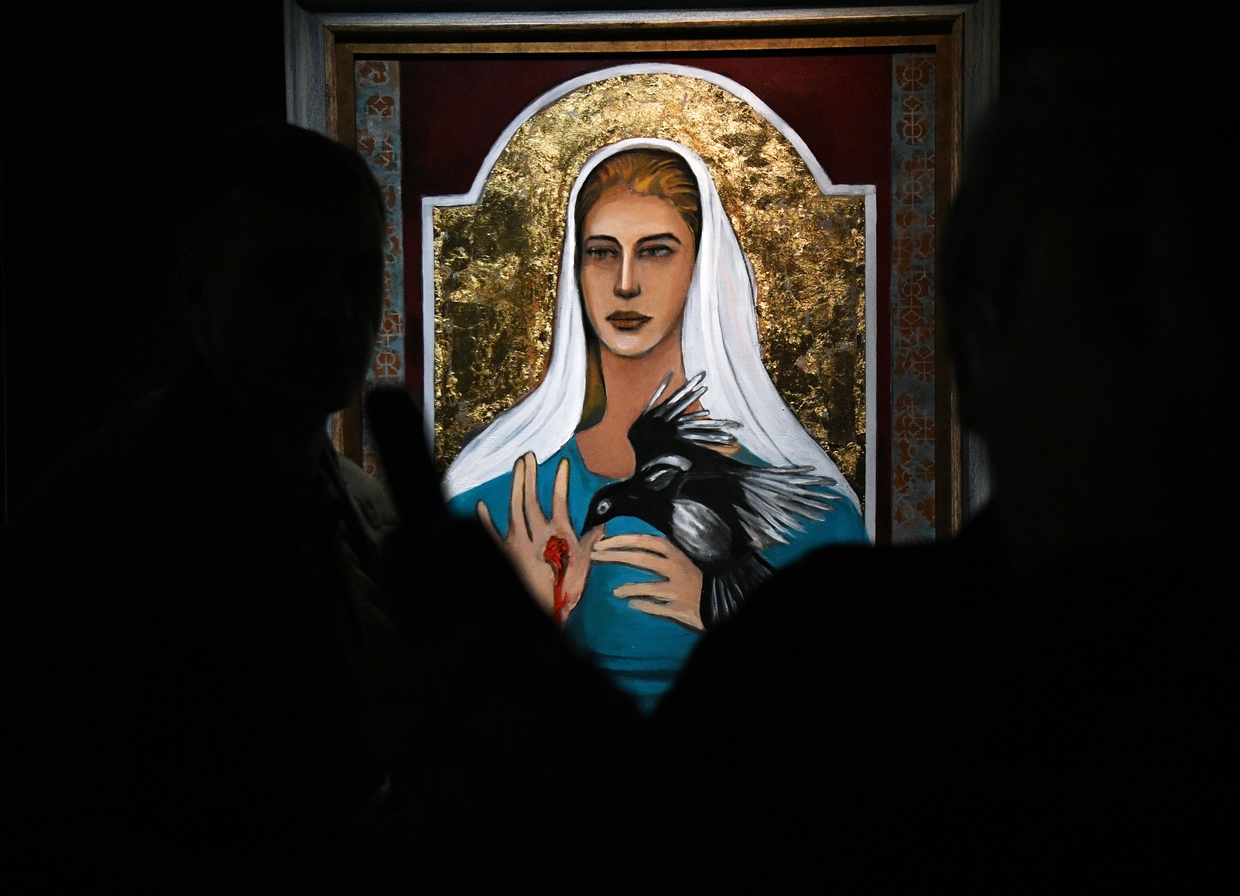
While Muammer Gaddafi still commands respect and loyalty among large sections of Libya, the country itself is unlikely to become stable, united, and peaceful anytime soon. Many observers, pessimistically, say that Gaddafi died and took Libya with him.
The statements, views and opinions expressed in this column are solely those of the author and do not necessarily represent those of RT.
